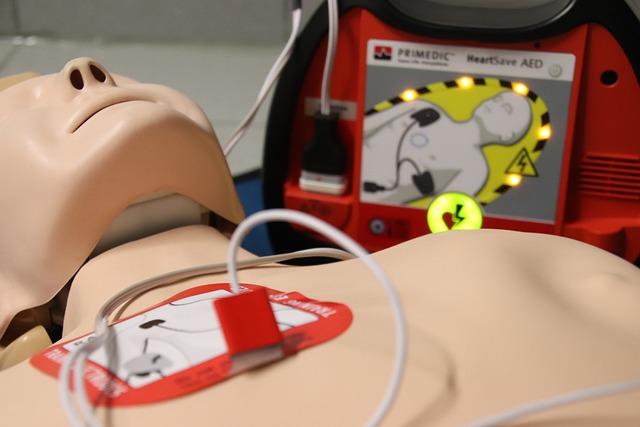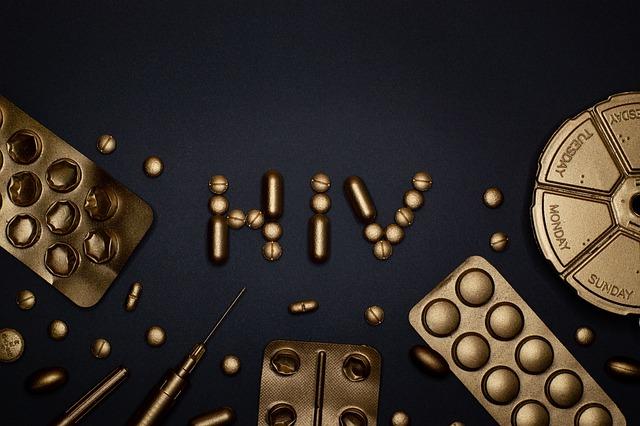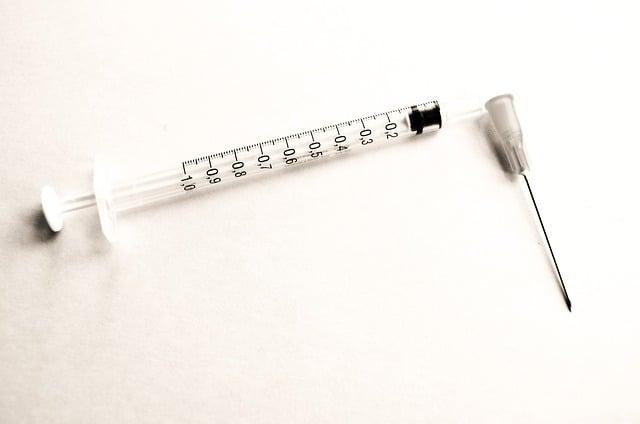In a significant pivot in U.S. foreign policy, a freeze on foreign aid championed by the Trump administration has brought critical programs combating HIV in Africa to a precarious halt. The decision, which has sparked widespread concern among public health advocates and global health organizations, jeopardizes years of progress made in reducing HIV transmission and improving treatment access for millions living with the virus. As the continent continues to grapple with one of the highest rates of HIV prevalence globally, the repercussions of this funding freeze raise urgent questions about the future of health initiatives and the lives they impact. This article explores the stakes involved in halting such an essential program, the potential consequences for African nations, and the broader implications for global health diplomacy in an era marked by shifting priorities in U.S. foreign aid.
Impact of Foreign Aid Freeze on HIV Programs in Africa

The foreign aid freeze instituted by the Trump administration has resulted in severe repercussions for HIV programs in Africa, where millions rely on external funding for their treatment and prevention initiatives. this halt in funding jeopardizes critical services that have been instrumental in lowering transmission rates and improving healthcare access in high-prevalence regions. Consequently, health organizations now face significant challenges, including:
- Disrupted Treatment Access: Thousands of patients may lose access to antiretroviral therapy (ART), which can lead to increased morbidity and mortality.
- Increased Stigma: Programs focused on education and prevention might potentially be curtailed, leading to a rise in stigma and discrimination against those living with HIV.
- Resistance Development: Interruption in treatment can result in drug resistance, complicating future treatment efforts.
In light of these looming threats, the need for immediate alternatives and solutions is paramount. As existing infrastructure struggles to adapt to the funding cuts,innovative approaches are necesary to sustain vital services. Collaborations between local governments, non-profits, and international organizations could help mitigate some of the fallout. Below is a fast overview of potential impacts on key program areas:
| Program Area | Impact of Funding Freeze |
|---|---|
| Prevention Services | Reduced community outreach and education initiatives. |
| Testing and Counseling | Limited access to testing,resulting in undiagnosed cases. |
| research and Development | delays in innovative treatment options and vaccine research. |
Understanding the Consequences of Reduced Funding for Healthcare Initiatives

The freeze on funding for healthcare initiatives, especially in areas like HIV prevention and treatment, poses serious risks not only to individuals but also to the broader public health landscape. With reduced investments, critical programs that provide essential services face immediate threats of disruption. The consequences can manifest in several ways:
- Increased Infection Rates: A lack of access to preventive measures such as condoms and pre-exposure prophylaxis (PrEP) can lead to a rise in new infections.
- Overburdened Healthcare Systems: Without adequate funding,healthcare facilities may struggle to cope with a surge in patients requiring treatment.
- stagnation of Progress: Years of hard-won gains in reducing HIV transmission could be reversed, jeopardizing the health of communities.
Moreover, the uncertainty stemming from funding cuts can hinder research and innovation in HIV treatment modalities. As funding diminishes, the ability of organizations to conduct trials and develop new therapies is severely compromised. This ripple effect can culminate in:
| Impact | Long-term Effects |
|---|---|
| Reduced Access | More individuals living with untreated HIV |
| Limited Outreach | Increased stigma and discrimination |
| Loss of Expertise | Decreased capacity for health education and advocacy |
The Role of U.S. Foreign Aid in Global Health Security

The recent freeze on foreign aid has significant implications for global health security, particularly in the ongoing battle against HIV in Africa. The U.S. has historically played a pivotal role in funding programs that offer prevention, treatment, and education initiatives. These programs are crucial not only for individuals living with HIV but also for the broader public health landscape. By halting financial support, critical resources for testing, medication distribution, and community outreach are compromised, leaving many vulnerable populations at risk of further spread and stigma associated with HIV.
Moreover, the repercussions of diminishing aid extend beyond immediate health outcomes.The interconnection between health security and socio-economic stability cannot be understated. As funding retracts, we may witness potential increases in healthcare costs, diminished workforce productivity, and a rise in public health crises. The implications are vast:
- Increased Transmission Rates: Reduced access to antiretroviral therapy can lead to higher rates of new infections.
- Impact on Healthcare Infrastructure: Strained health systems struggle to provide necessary services, undermining progress made over the years.
- Global Health Inequities: Disparities in healthcare access widen, particularly affecting marginalized communities.
| Impact Area | Potential Consequences |
|---|---|
| HIV Treatment Access | Decreased patient enrollments in ART programs |
| Public Health Education | Reduced awareness leading to higher transmission |
| Community Health Initiatives | Less outreach and support services available |
Future Implications for HIV Prevention and Treatment Efforts

The implications of the recent freeze on foreign aid are profound and multifaceted,particularly in the context of HIV prevention and treatment efforts in Africa. With millions relying on programs funded by international assistance, the interruption of these vital resources jeopardizes not only access to life-saving medications but also the overall progress made in combating the epidemic. Without sustained funding, there is a real risk of reverting to higher HIV transmission rates, inadequate treatment access, and a potential increase in HIV-related morbidity and mortality.
Moreover, the cessation of support may hinder ongoing research and community outreach initiatives that are critical for effective prevention strategies. Key preventive measures include:
- Education and Awareness: Reducing stigma and promoting safe practices.
- Testing and counseling: Increasing the availability of testing services in underserved areas.
- Treatment as Prevention: Ensuring ART accessibility for those living with the virus.
As these initiatives are put at risk, the logistical challenges compounded by the pandemic could further complicate efforts to maintain progress. To illustrate, the table below summarizes the potential impact of the aid freeze on key HIV indicators:
| Indicator | Current Status | Projected Impact of Aid Freeze |
|---|---|---|
| New HIV Infections | 1.7 million annually | Potential increase of 15% |
| People on Treatment | 38 million globally | Decline by 20% |
| Transmitted HIV Drug Resistance | 10% of new infections | Rise to 15% |
Urgent Recommendations for Policy Makers and Stakeholders

Considering the recent freeze on foreign aid which adversely affected critical HIV programs in Africa, it is indeed imperative for policymakers and stakeholders to take immediate action. The consequences of this hiatus are severe and wide-reaching. To mitigate the ongoing health crisis,the following steps should be prioritized:
- Reinstate Funding: Urgently allocate resources to resume support for HIV treatment and prevention initiatives.
- Engage Local Governments: Collaborate with African nations to tailor interventions that resonate with local contexts.
- Strengthen Partnerships: Build alliances with NGOs and community organizations that are pivotal in the fight against HIV.
- Promote Education: Launch awareness campaigns to address stigma and encourage testing and treatment participation.
Additionally, a comprehensive review of foreign aid policies is necessary to ensure that similar disruptions do not occur in the future. A strategic approach can create sustainable health programs that withstand political volatility. Key considerations include:
| Consideration | Description |
|---|---|
| Long-term Investments | Commit to ongoing support that focuses on building resilient healthcare systems. |
| Data-Driven Approaches | Utilize reliable data to adapt programs based on effectiveness and emerging needs. |
| Policy Transparency | Enhance accountability through clear interaction of funding allocations and program impacts. |
Mobilizing Support: The Path Forward for HIV Combating initiatives

The ongoing struggle against HIV in Africa rests on the precarious balance of funding and political goodwill. Following the foreign aid freeze initiated during the Trump administration, critical programs designed to provide treatment and support for those living with HIV have faced severe disruptions. This setback highlights the urgent need for a renewed commitment from both governmental and non-governmental entities to mobilize resources and ensure the continuity of these life-saving initiatives.To effectively combat the HIV epidemic, stakeholders must prioritize strategies that foster collaboration and outreach. Key strategies include:
- Building Alliances: Forming partnerships with local organizations can enhance program efficacy and increase community buy-in.
- Advocating for Policy change: Lobbying for increased funding and support at the national and international levels remains crucial.
- Utilizing Data: Implementing data-driven approaches can ensure that resources are allocated where they are most needed.
- Enhancing Education: Increasing awareness around HIV prevention, treatment, and stigma reduction is vital for community engagement.
To visualize the potential impact of renewing our commitment, consider the following table that summarizes projected outcomes with increased funding:
| Funding Level | Estimated HIV/AIDS Cases averted | Number of Lives Saved |
|---|---|---|
| $100 million | 50,000 | 10,000 |
| $500 million | 250,000 | 50,000 |
| $1 billion | 500,000 | 100,000 |
These figures underscore how crucial it is indeed for philanthropic entities and governments to prioritize HIV initiatives.A united front is imperative to address this public health crisis effectively, ensuring that no one is left behind in the fight against HIV/AIDS.
Final Thoughts
the suspension of foreign aid under the Trump administration has had significant ramifications for global health initiatives, particularly in the fight against HIV in Africa. As this article highlights, the halting of crucial programs not only jeopardizes the progress made in treating and preventing this devastating disease but also threatens the well-being of millions who rely on these essential services. The interplay between political decisions and human health underscores the urgent need for a comprehensive approach to foreign aid—one that prioritizes the health and dignity of individuals over partisan agendas. As stakeholders reflect on the past and plan for the future, the stakes remain high, with lives hanging in the balance and the fight against HIV more critical than ever.







